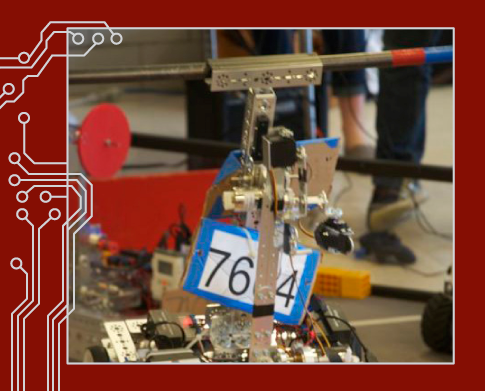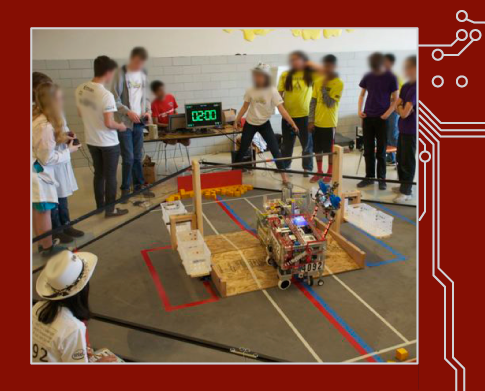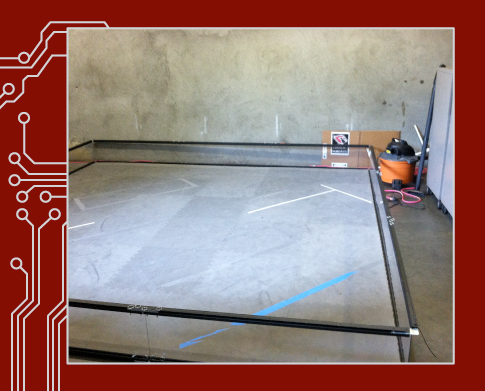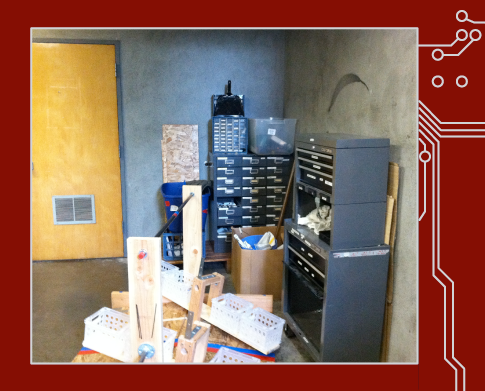FTC Robotics Program: Reflections

Introduction
This document is a history of the challenges in the first year of starting an FTC Robotics Program as a class (as opposed to a club). The intended audience includes anyone who is thinking of starting an FTC Robotics program whether class or club. The reason “FTC” is mentioned specifically is that involvement with a major national program, supported by organizations like Google, the Girl Scouts and MIT, has many positive (and negative) aspects. The goal of this document is to provide the reader a compendium of all the problems (and posited solutions) we encountered.
Our History
We had the good fortune to be provided a curriculum development grant for a new robotics class from the Qatar Foundation International for the 2013-14 school year. Sharing the curriculum and lesson plans we developed was an intended outcome of the grant, but we came to understand that when teachers embrace the FIRST Tech Challenge they become project managers and students become self-directed work teams. Since the annual challenge drives each team’s work, there can be no curriculum. We hope this document of reflections and lessons learned can guide other teachers who are considering adopting this project-based learning approach in their classrooms.
We started planning the summer before the class. There was an enrollment of close to 50 students (with the vast majority being Freshman). When registering on the official FTC Site, we found an FTC Sample Budget under additional resources for starting up a robotics team. This was a very valuable document and we used it as a basis for estimating costs and started up ordering materials.
Required Materials
A robotics “kit” to build a competition robot requires:
- a laptop/PC
- a Lego Mindstorms Kit,
- a Tetrix Kit of Parts,
- a Tetrix Resource kit, and
- a Samantha Wi-Fi Module.
Minimum costs per team: $1000.
The laptop is used for writing Robot-C code and downloading it to your robot. The computers are expensive items and not figured into the general cost. It was quite a struggle for us to find laptops we could afford (without buying new ones).
You will also need a “Field” (an environment for students to run their routines and try out their robot moves, preferably resembling the competition field) and a place to house it!
On top of this, each team will require:
- tools and storage
- additional motor controllers,
- servo controllers,
- extra motors,
- extra pieces of frame, wiring, hubs etc.
Additional costs: $400/team.
Registration costs: about $250/team with additional costs $60/team/tournament.
Ordering Materials
The FTC organization (in conjunction with their supplier Pitsco) have a very solid organization for delivering materials to you. That said, we still encountered many delivery problems.
Delivery Issues
One should allocate at least 2 weeks for an order to be delivered. What we didn’t know was that unless you attach a team number to your order, your order may be indefinitely delayed. This happened to us several times and some orders took months. It turns out that their delivery system is geared to delivering to teams in time for competitions. If you don’t have a team number on your order, you keep sliding down the list.
It took many phone calls to sort this out. This year was especially bad as the number of teams across the country (world?) skyrocketed and the supplier was incapable of keeping up with the number of requests. A specific example of this was the Samantha Module (SM). The SM is a critical component for actually running your robot on a field and competing. All teams were notified that each team could have only one SM and to get a replacement module would require shipping the failed one back.
Consider the effects of this: you are running a class, you have a team dead-in-the-water, and you have to wait a couple of weeks to get them going again ... a teacher’s nightmare.
School Year
At the start of the school year we had several goals to accomplish: to have students learn teamwork, self-initiative, basic mechanics and programming to solve the larger issue of delivering a working robot to a competition.
We set out to educate the students on basic robotics. Since we were short on FTC robotics kits (due to above delivery problems), we thought we would bring all students up to speed on the basic NXT Mindstorms kits. As part of that process, students learned how to write Robot-C programs and have a basic robot “solve” various problems (available on the Robot-C website … an excellent resource). This activity took us well into the start of November.
At this time (past the midpoint of the semester), enough material had arrived that all students could start building a robot. Also, in early November the FTC organization opened up registrations for competitions. The competition dates started in December. Since we were working with students that knew very little we chose a competition date in February; “chose” is a slight exaggeration. There were an enormous number of teams registered in our district this year, which made getting a competition date a bit of a lottery.
Starting work on the FTC competition robot late effectively put a complete block on executing against a planned-curriculum. The students were doing everything they could for 4 hours/week to create a robot to take to a tournament.
Weather was also a factor. Because of a large snowstorm a few days before the competition, the schools were shut down and a travel advisory was put into effect; the tournament was cancelled. We worked to reschedule. This was logistically difficult as we wanted to take all six teams to one event but there was no way to coordinate this quickly.
Another lesson learned: increasing the number of teams for one organization multiplies the complexity of logistics exponentially.
Throw your own party

To enable the students to have a tournament experience, we decided to schedule our own tournament at our school. We did this on May 3 and had our six school class teams, two school club teams and four teams from a neighboring high school (Benson High School). The tournament went from 10am to 3pm and was quite a success. Benson asked us to do this again next year as it provided the club teams an opportunity to continue to compete after the season. It also provided the parents of our students an opportunity to come and watch the tournament in a very relaxed atmosphere.
We let the students run the tournament and the instructors helped with setup and simply managed materials and minor crises. It was a fantastic event and all the kids had a great time. On a side note, by the end of the tournament, only a few robots were still viable. Many motors burned out, systems came undone, etc. It was a learning exercise in building simple and reliable systems; the complex club-team robots died by the end of the tournament while only the simple, few-functioned robots were still running.
Link to scrimmage video on Vimeo: http://vimeo.com/98892133
Structured class vs. after-school club
There is a fundamental issue in running this program
as a structured class. A structured class implies having a specific curriculum you can
execute against. Being involved in an FTC program, choosing to allow the
students to be innovative and to allow them to create their own design in a classroom framework
limits what can be accomplished. A club team has greater flexibility as they
typically are more dedicated (they really want
to build a robot) and they have more time (clubs are willing to work
weekends and after school). There are some class teams that have that esprit de corps, but most students
taking a class for a grade are going to reign in their efforts so that they can balance the load with other classes. The lesson here is to be open and build simple.
Lessons Learned
Here are a few additional lessons that we have learned this year.
Team size
Team sizes would ideally be three people, but financing is prohibitive, so four is more practical. Four is also a good number for going to competitions as there will always be people that can’t make it. You must have at least two people for the competitive events. Five-student teams is also possible, but we found that at five or more students, one student always seems to be left out, with nothing to do.
This raises the question:
“Why not do some teaching with those students that are not actively working on the robot?”
Two reasons:
First, the teacher is spending 98% of his/her time working with students in terms of getting materials, answering questions, and helping answer design questions.
The second reason is that as soon as you pull a student away from the team you are defeating the purpose of shared-learning and team interaction (which is a hugely valuable experience at this age).
Team makeup
Be careful about team makeup. Avoid just letting friends pick their own teams. Each team should have a designated:
Builder
Programmer
Project Manager
Notebook owner
and the ability to rove to any other job. If students are sick you do not want progress to halt.
Having a practice field
To really motivate the students you must have a field with all the field elements. Until we had a field up and the students could tackle the problem for real instead of in-the-abstract, there was a sense of uncertainty, I-don’t-know-what-to-do attitude. The FTC website has excellent videos/animations but a real field makes all the difference.

Having a running field is critical to the success of your program. A field is a semi-permanent structure in a room in your school. It is 12’X12’ but also requires a fair amount of space around it. It is “moveable”, but that requires several hours of effort. This means that once you build it, that is pretty much locked in for the season. This will require at least a couple of tech-savvy students who can bring up the field from scratch, diagnose connection problems with the wireless etc. We learned this the hard way several times when our guru was absent and put a lot of effort into training multiple students.
Also, before the day of competition the field should be brought completely up with four robots and eight controllers connected. If you do not do this you may find that you don’t have enough USB connectors on the day of the tournament (… it happened to us).
As mentioned before, if you have a field, schedule a scrimmage (at least one) and invite some other schools. Kids love the competition and seeing that others have solved the problems that have stumped them is a great motivator.
Spare parts
Buy spare parts ahead of time. Do not wait for
the school
year to start. Keep track of all critical components and make sure the
students
know they are assigned out to them. If you have neighboring schools that
are also involved in the robotics competitions, ask if anyone has
started a parts coop or think of starting one in your community. It is
in the spirit of the robotics competitions to be helpful and to work
together.
Security
Have a safe/secure place to store student materials, tools, etc. No matter how highly you think of them, students pick things up, move them, misplace them, forget to put them away, and on and on. This should be a locked room.

Engineering notebook
Be rigid and demanding about the engineering notebook. We weren’t. This is a valuable learning experience. Next year this will become an integral part of the program. Examples of engineering notebooks can be found at the ORTOP site.
3D printers
If you can afford a 3D Printer, get one. They are great for allowing the students to learn spatial reasoning and they can build cool parts for their robots. We used one extensively. In terms of convenience, the Makerbot was very useful. It should be noted that some parts that were built could have been made of other materials, but the students wanted to use the new technology, a great learning experience.
Additional Tips
Teams that exist over multiple seasons (club teams) have built up an internal expertise. For them, doing multiple tasks on the same robot (to meet game requirements) is no big deal. To new teams, this can be daunting. We let the students tackle each task separately or combine them to their heart’s content. This worked quite well for a class, but doesn’t pan out when you go to tournaments. So, we learned that you need to have at least three solid game-tasks ready when you go to the tournament … and, they need to be robust. Robots get knocked around at the tournament, and the wear-and-tear over several hours is impressive. Motors burn out. Wires become unsoldered. That said, it turns out that the simpler robots capable of doing a few tasks well, tended to succeed.
Many FTC teams allow coaches and mentors to “help” with the robots. We took a firm stand (and still do) that the learning experience is compromised the moment the teacher/mentor works on the robot. It’s ok to tell a student how to do something or point him/her to resources, but one should never ever take a tool to the robot. The student must own it. Failure is good. Learning happens.
Resources
FTC Website: http://www.usfirst.org/
Sample Budget: http://www.usfirst.org/roboticsprograms/ftc/registration
Robot C site: http://www.robotc.net/
ORTOP site: http://www.ortop.org/ftc/res.htm
Inventory Lists: http://www.usfirst.org/roboticsprograms/ftc/tetrixkop